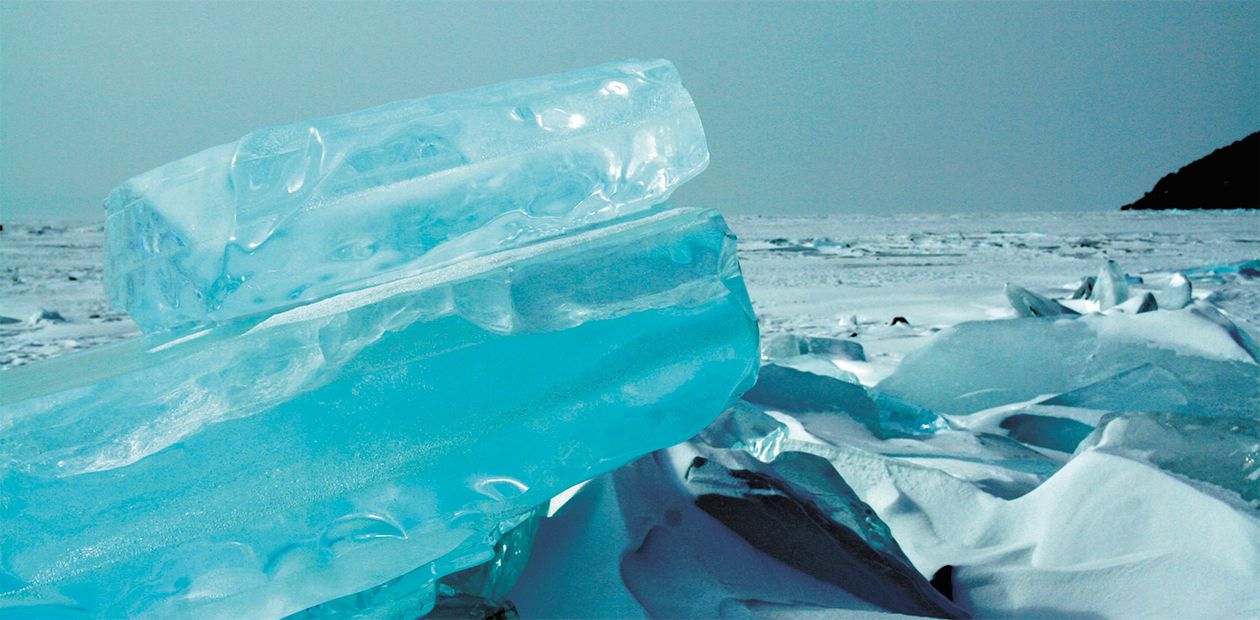An Ice-Quake as a Tectonic Model
Scientists suggest to use the ice cover of Lake Baikal as a special natural laboratory for earthquake prediction.
Spring ice, with its highly changeable structure and mechanic properties, is the best model of plate motion
Lake Baikal, a wonderful piece of nature, for ages has fascinated people by its mysteries and unpredictable behavior. The kilometers-thick lake sediments document the history of Asian geology and climates; the lake flora and fauna are of exceptional wealth and diversity. Even the clear ice of the lake is extraordinary, as well as its water.
Who has ever been lucky to fish from the Baikal ice could see how ice blocks collide in spring, like tectonic plates during a real earthquake. Ice behaves in this way as the lower layers of floes change from the elastic to viscoplastic state.
Ice-quakes have become the focus of an SB RAS integration project launched in 2005 on the initiative of academician Nikolay L. Dobretsov. The project with the self-explanatory title Baikal Ice as a Tectonic Model has been run jointly by scientists from six academic institutions of Tomsk, Irkutsk, Novosibirsk, and Ulan-Ude.
The challenge was to study deformation, fracturing, and mechanic failure of the lake ice as a model of processes in the Earth’s crust, especially seismic movements. Full-size experiments on controlled deformation of ice samples, blocks, and plates in two field trips addressed the failure-induced seismic, acoustic, and strain effects. Particular attention was given to the formation of great (major) fractures because the attendant dynamic effects — we called them ice shocks — resembled tectonic earthquakes.
The ice-quake study has no equal in the world practice and its many results are unique. The key point is that the Baikal freshwater ice does possess various mechanic and rheological properties, which makes it a faithful model of crustal tectonics.
Experiments of this kind are virtually impossible with real crustal blocks. Besides the basic science, the results of the ice project can have practical applications concerning ice crossing safety or mitigation of ice damage to quay structures.
Valery V. Ruzhich,
doctor of Geology and Mineralogy (Institute of the Earth’s Crust, Siberian Branch of the Russian Academy of Sciences,
Irkutsk Science Center)











